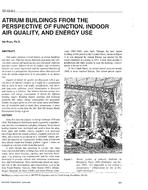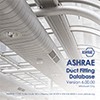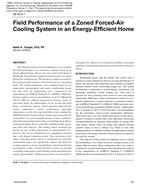Energy efficiency projects often have secondary effects on the quality of the indoor environment. This secondary effect may be to improve indoor environmental quality (IEQ), leave IEQ relatively unaffected (provided that certain cautions and adjustments are adhered to), or degrade IEQ, sometimes substantially. Many energy professionals believe that IEQ necessarily leads to significant energy penalties. Using the DOE-2E computer simulation program, it is estimated that a staged energy retrofit program using typical energy efficiency measures for an office building or education building can cut energy costs in half while still enhancing IEQ. Only modest energy penalties need to be associated with meeting the IEQ ventilation requirements of ANSI/ASHRAE Standard 62-1989 for both office and education buildings in any climate. For education or other buildings with high occupant densities, upward adjustments to variable-air-volume (VAV) box minimum settings and relative humidity control may be necessary to ensure that minimum ventilation rates are met and relative humidity is controlled. However, the energy penalty associated with these requirements can be greatly reduced or negated with the use of energy recovery technologies. Thus, contrary to common perceptions, this paper demonstrates that energy efficiency and indoor environmental quality projects can be successfully integrated. It is suggested that energy professionals can improve the IEQ of the buildings they service and consider these improvements as an opportunity to promote their projects on the basis of these added benefits.
Citation:IAQ and Energy 98: Using ASHRAE Standards 62 and 90.1 Conference Papers
Keywords:October, Louisiana, 1998
Citation: IAQ Conference: IAQ 98
Product Details
- Published:
- 1998
- File Size:
- 1 file , 150 KB
- Product Code(s):
- D-8120


